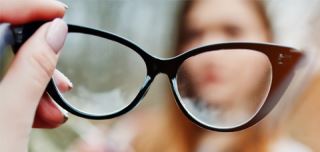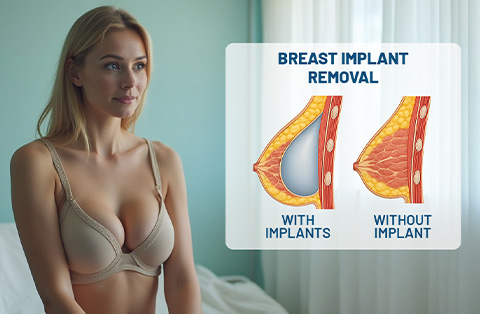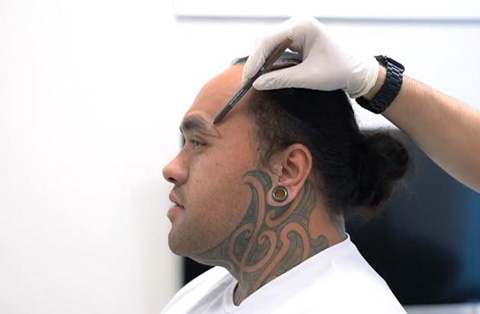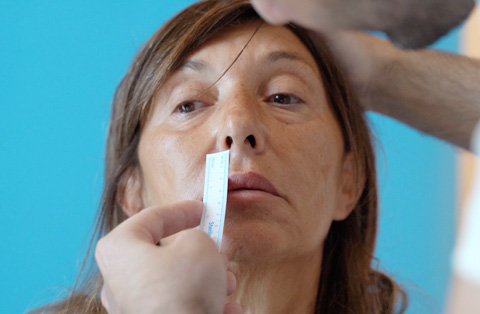Struggling with blurry vision from dry eyes? Learn why it happens, what causes it, and discover proven treatments that restore clear sight and lasting eye comfort.
Dry eye is a condition where the eyes don’t produce enough tears or the tears evaporate too quickly, leaving the surface dry, irritated, and unstable.
It’s an important topic because dry eye is one of the most common eye conditions worldwide, affecting up to one in three people. Beyond discomfort, it can cause blurry vision that impacts reading, driving, and daily tasks.
In this article, we’ll explain how dry eyes and blurry vision occur together, what symptoms to look for, the main causes, when to see an eye doctor, and the treatments that bring lasting relief.
What Is Dry Eye Syndrome and How Does It Affect Your Vision?
Dry eye syndrome is a condition where the eyes don’t produce enough tears or the tears evaporate too quickly. Tears are essential for keeping the eye surface smooth, moist, and clear. Without a stable tear film, the eye becomes dry, irritated, and more vulnerable to damage.
When the tear layer is unstable, light entering the eye scatters instead of focusing properly. This can make vision appear blurred or inconsistent, especially when reading, driving, or working at a screen. Some people experience temporary sharpness that fades within seconds, while others notice persistent blurring throughout the day.
Over time, untreated dry eye can affect the quality of vision and make routine tasks more difficult. The condition doesn’t always lead to permanent vision loss, but it does reduce clarity, comfort, and overall eye health.
What Are Dry Eye Symptoms?
Dry eye symptoms often develop gradually and may vary in severity from day to day. The most common sign is a persistent feeling of dryness or irritation in the eyes. Some people describe it as burning, stinging, or a gritty sensation, as if sand were in the eye.
Blurred vision is another key symptom. This often fluctuates, becoming worse after long periods of reading, computer use, or exposure to wind and air conditioning. Dry eyes cause blurry vision because the tear film is not stable enough to keep the eye surface smooth.
Other symptoms include:
Redness and eye fatigue
Sensitivity to light
Watery eyes caused by reflex tearing
Difficulty wearing contact lenses
Eye discomfort that worsens throughout the day
Recognizing these symptoms early is important. Persistent or worsening signs may point to dry eye syndrome, a chronic condition that requires medical attention.
How do dry eyes and blurry vision occur together?
Dry eyes and blurry vision occur together because the tear film plays a central role in focusing light on the cornea. A healthy tear layer keeps the surface of the eye smooth and stable, allowing images to remain sharp. When the tear film breaks down due to dryness, light scatters instead of focusing evenly, leading to blurred or fluctuating vision.
Blurriness linked to dry eye often worsens with certain activities. Reading, driving at night, or spending long hours on digital screens increases tear evaporation. Environmental triggers like wind, smoke, or air conditioning can intensify both dryness and visual disturbances.
In many cases, blurred vision improves temporarily after blinking or using artificial tears. This short-term relief confirms that unstable tears are disrupting the eye’s optical surface. However, when dryness becomes chronic, the blurriness can persist and affect overall visual quality.
What Causes Blurred Vision?
Blurred vision happens when the eyes cannot focus light clearly on the retina. The causes range from temporary factors to long-term eye conditions. In the context of dry eye, blurriness occurs because the tear film is unstable, disrupting the smooth surface needed for sharp focus.
Other common causes include:
Refractive errors such as nearsightedness, farsightedness, or astigmatism
Eye strain from prolonged screen use or poor lighting
Medical conditions like diabetes, which can alter the eye’s internal structures
Eye diseases including cataracts can cause blurred vision, glaucoma, or macular degeneration
Medications or systemic illness that reduce tear production or affect vision
In dry eye specifically, blurred vision often fluctuates and improves after blinking or using eye drops. Unlike structural eye diseases, this type of blurriness stems from tear film instability rather than permanent changes to the eye.
How Do Dry Eyes Cause Blurry Vision?
Dry eyes cause blurry vision by disrupting the tear film that coats the eye’s surface. The tear film is the first layer of the eye’s focusing system. When it is thin, uneven, or evaporates too quickly, light entering the eye scatters instead of forming a clear image on the retina. This scattering produces blurriness that often comes and goes.
Blinking usually restores vision briefly because it spreads a fresh layer of tears over the cornea. But in people with dry eye, this relief doesn’t last long. As the tears break down again, blurriness returns. The problem is especially noticeable during activities that reduce blinking, such as reading or screen use.
Over time, chronic dryness can damage the corneal surface, making visual clarity less stable. In severe cases, dry eye syndrome not only causes discomfort but also leads to lasting disturbances in how well the eyes focus.
What happens to the eye when tears are unstable?
When tears are unstable, the protective film covering the eye becomes uneven and breaks apart too quickly. This film is made of three layers: oil, water, and mucus. Together, they keep the cornea smooth, hydrated, and clear. If any layer is deficient, the tear film loses balance.
An unstable tear film leads to:
Dry patches on the cornea, exposing nerve endings and causing irritation
Fluctuating vision, as light scatters over an irregular surface
Inflammation of the eye surface, which worsens redness and discomfort
Reflex tearing, where the eye produces excess watery tears that don’t correct the dryness
These changes make the eye more vulnerable to damage and infection. With ongoing instability, the cycle of dryness, irritation, and blurred vision continues, often progressing into chronic dry eye syndrome.
Why does blurred vision occur due to dry eyes?
Blurred vision occurs due to dry eyes because the tear film cannot maintain a smooth optical surface. Tears act as the eye’s first lens, bending and directing light onto the retina. When the tear layer breaks apart or evaporates too quickly, the corneal surface becomes irregular. This irregularity causes light to scatter, leading to blurred or fluctuating vision.
The blurriness is often worse in situations that reduce blinking, such as prolonged screen time or reading. Blurred vision may also increase in dry or windy environments where tears evaporate faster. Unlike vision problems caused by refractive errors or eye disease, this blurriness improves temporarily after blinking or applying artificial tears, confirming that tear instability is the source.
Over time, chronic dryness can damage the corneal surface, making vision problems more persistent and harder to correct.
When should you see an eye doctor about blurry vision?
Blurry vision that appears suddenly or persists should always be evaluated by an eye doctor. Temporary blurriness from dry eyes often clears with blinking or artificial tears, but vision that does not improve may signal a more serious problem.
Schedule an appointment if you notice:
Blurry vision in one or both eyes that continues for hours or days
Sudden vision loss or double vision
Blurriness with eye pain, redness, or light sensitivity
Fluctuating vision that worsens over time
Blurry vision accompanied by headaches, dizziness, or other systemic symptoms
These signs may point to eye conditions beyond dry eye, including refractive errors, cataracts, glaucoma, or even neurological causes. An eye doctor can determine whether dry eyes cause blurry vision or if another condition requires treatment.
What Are the Treatments for Dry Eye and Blurry Vision?
Treatments for dry eye and blurry vision focus on restoring tear stability and protecting the eye surface. Most people start with artificial tears, which temporarily moisten the eyes and clear vision. Lubricating gels or ointments can provide longer relief, especially at night.
If symptoms persist, eye doctors may recommend:
Anti-inflammatory eye drops to reduce irritation and improve tear quality
Prescription medications that increase natural tear production
Punctal plugs, small devices that block tear drainage and keep moisture on the eye
Lifestyle changes, such as reducing screen time, improving humidity, and wearing protective eyewear
In chronic cases, treating the underlying cause of dryness is essential. Addressing these factors not only relieves discomfort but also stabilizes vision. Learn more about self-care on dry eyes.
Frequently Asked Questions
How do you fix blurry vision from dry eyes?
Blurry vision from dry eyes improves by stabilizing the tear film. Artificial tears or lubricating gels offer quick relief. Frequent blinking, reducing screen time, and using a humidifier help prevent tear evaporation. If symptoms persist, an eye doctor may prescribe anti-inflammatory drops or insert punctal plugs for lasting improvement.
Can dry eyes cause sudden blurry vision?
Yes, dry eyes can cause sudden blurry vision when the tear film breaks down quickly, leaving the corneal surface irregular. This blurriness often clears after blinking or using lubricating drops. However, sudden persistent vision changes may signal another condition, so an eye doctor should evaluate unexplained or worsening symptoms promptly.





